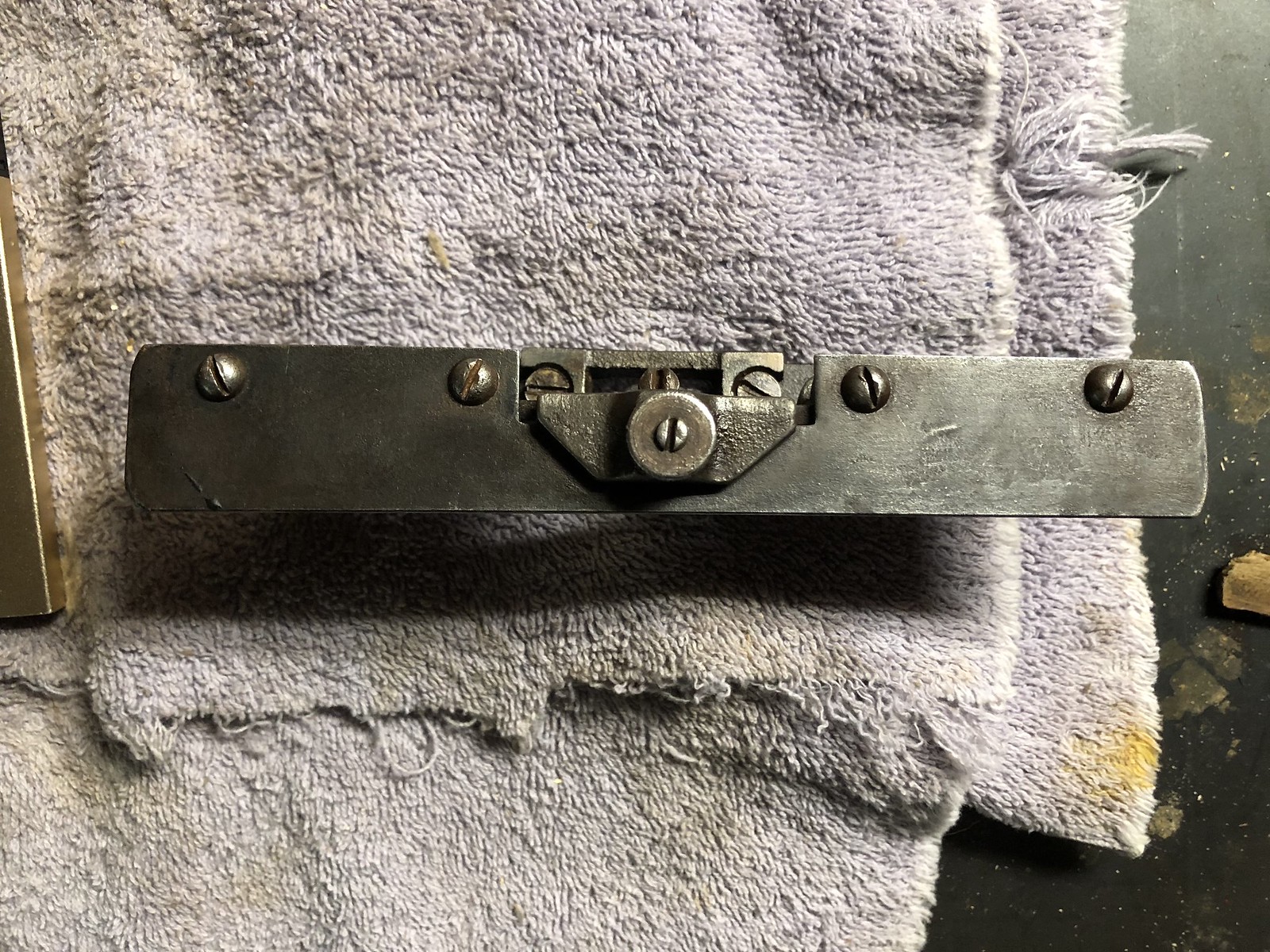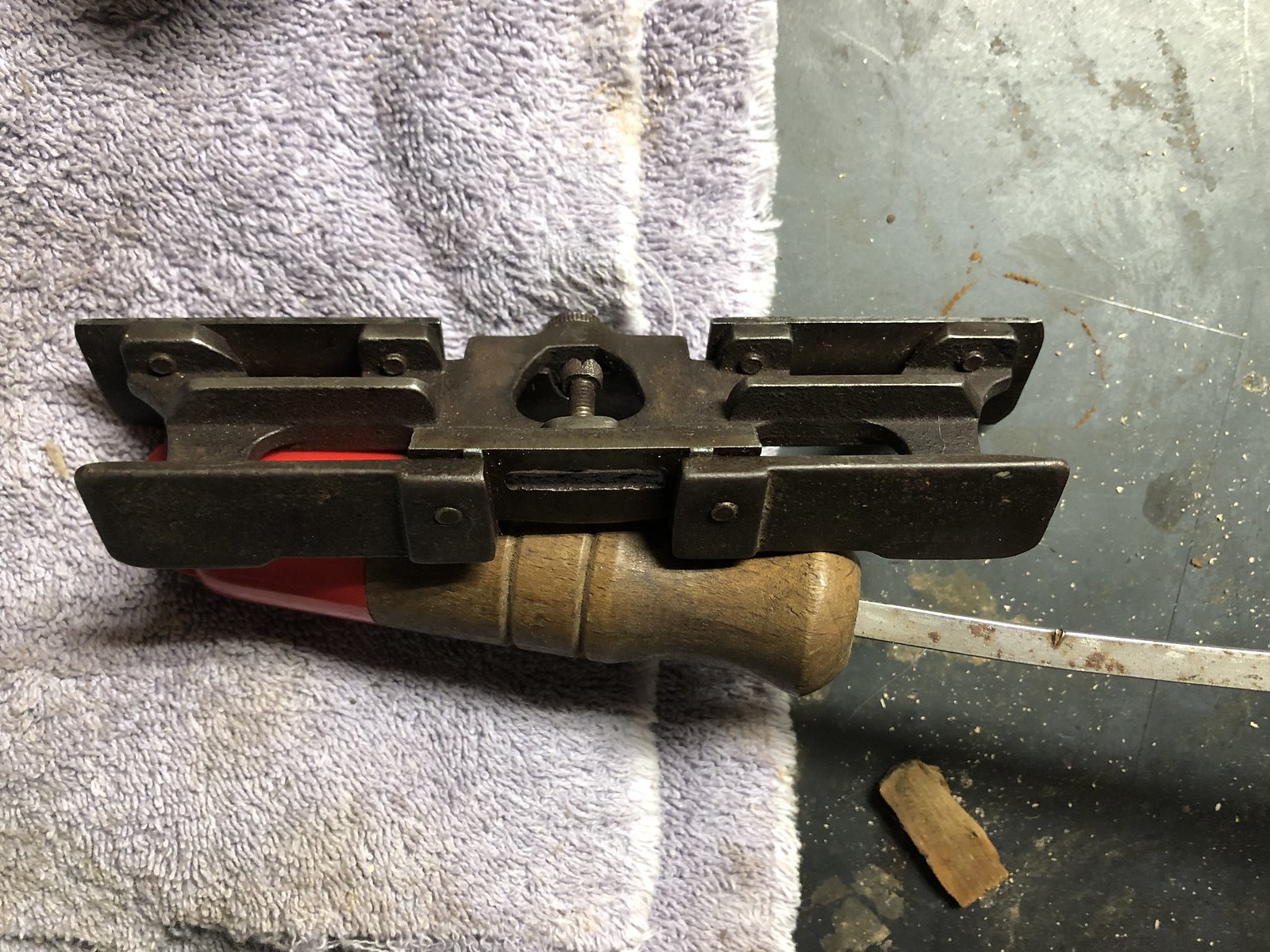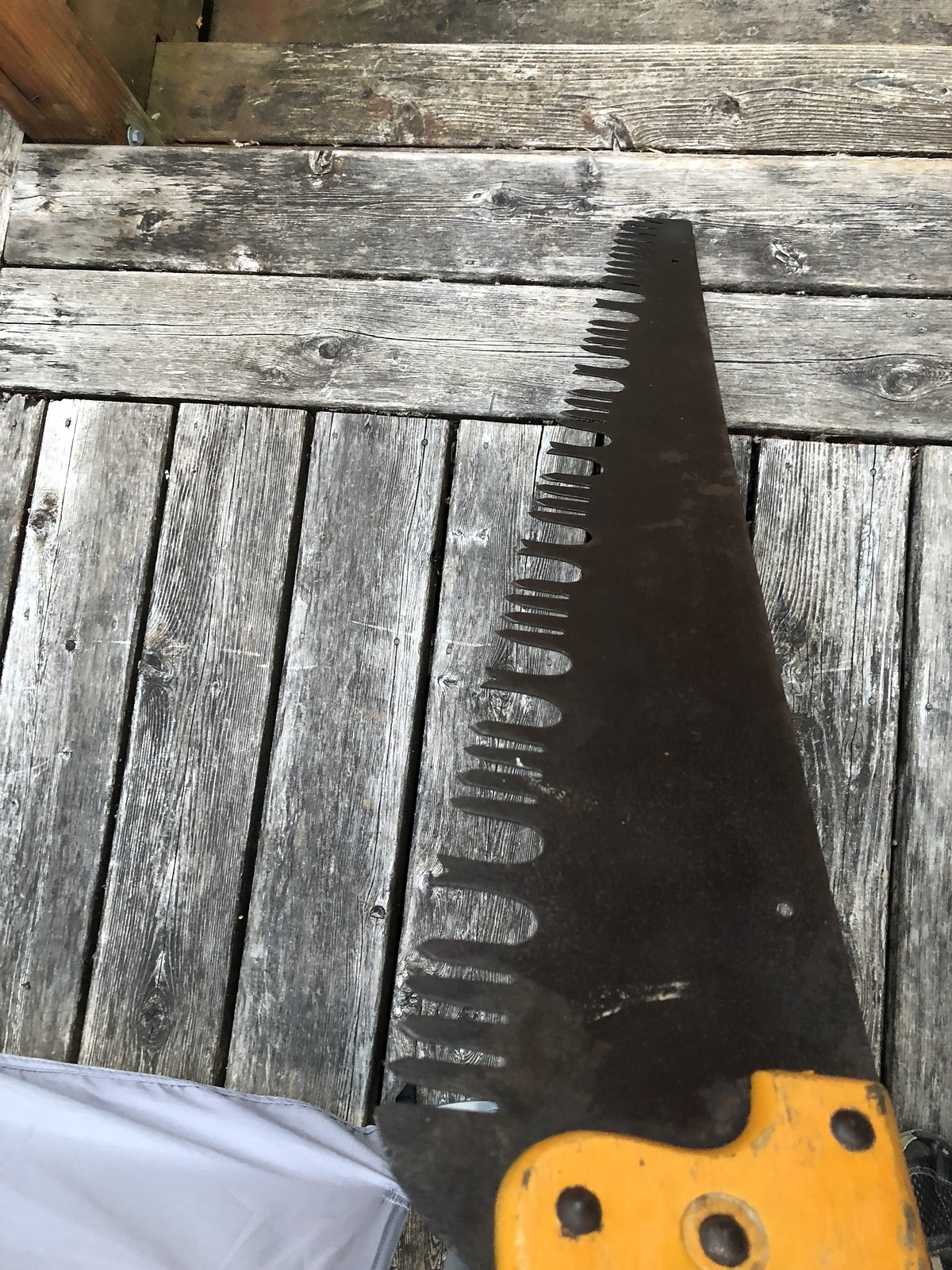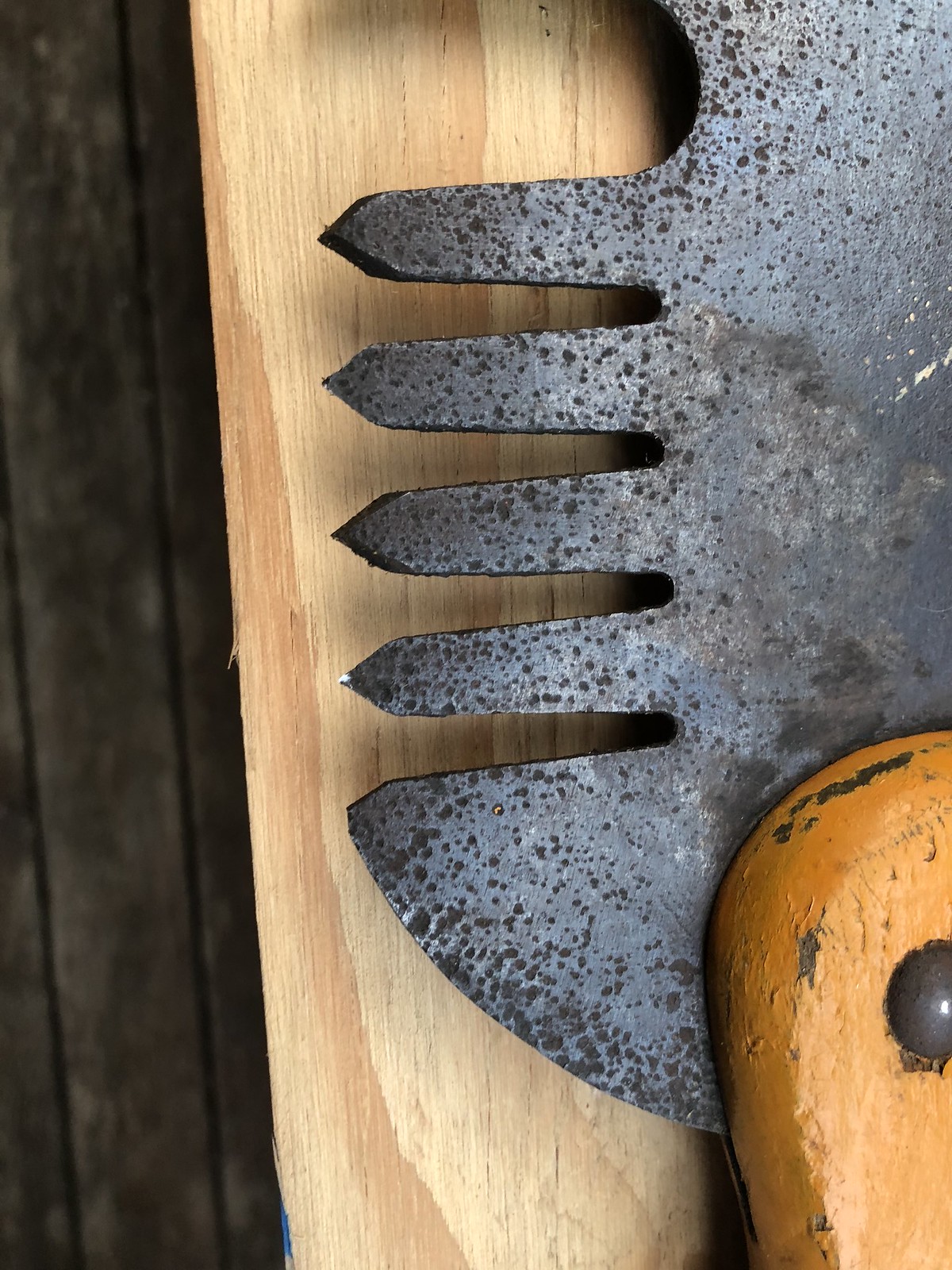- Joined
- Aug 21, 2013
- Messages
- 3,898
Don't give a 2nd thought to that. You're going to have reset the saw anyway. Clean/file the back of those cutters good so you can make a good point. When you're setting whether you have to change a particular tooth by 1/1000 or 12/1000 makes little difference.
Thank you, Square_peg.
I have some fresh files for just this sort of thing but I am wondering,
1. Should I lay it flat on my anvil and push stoke the length of the saw, across the cutters as demonstrated in the continued video you shared earlier?
2. Do I flatten the set out first or does the file only make contact with those teeth inherently set towards me, then flip it over and do the same to the other side (as the previously-opposing cutters will be the ones set toward me to meet the file)
Like I mentioned, what I lack in experience, is made up in questions lol.
I appreciate all the help from you guys who have done this a while - and those who haven’t, for that matter.














 Thirty.six
Thirty.six